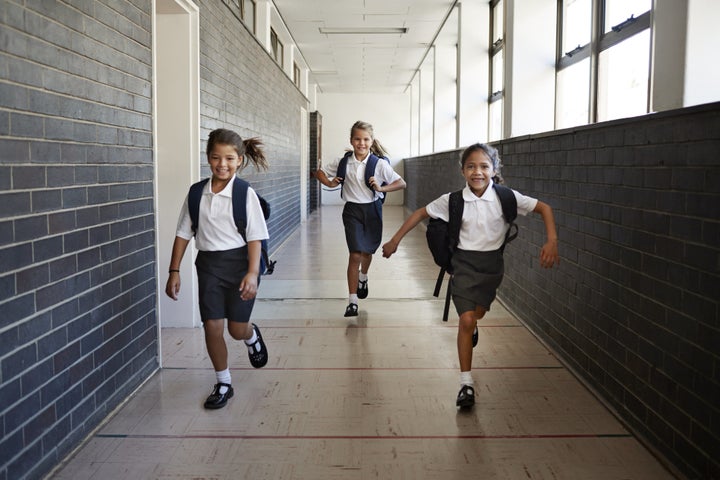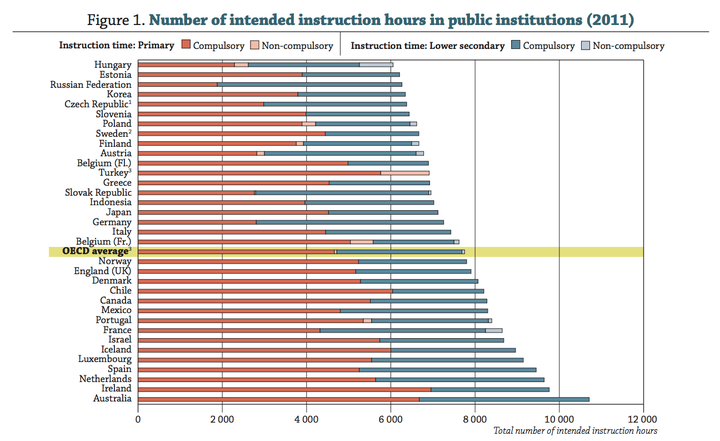George Osborne will announce in his Budget today [Wednesday 16 March] that children in secondary schools will now have longer school days.
Secondary schools will be allowed to keep children in lessons after 3.30pm, with at least an additional five hours a week of lessons or extra-curricular activities, including sport and art.
Osborne said at least 25% of all secondary schools will be a part of this change.
Secondary school pupils currently spend around six and a half hours at school per day (usually from 9am to 3.30pm), which adds up to a total of 1,170 hours across the compulsory 195 days of school per year.
With the increase in hours, the annual time spent at school for secondary pupils will be up to 1,462.5 hours.

How does it compare to the hours children spend in school around the world?
Some countries start a little earlier. In America, children in Middle School - the same age as secondary school in England - will start around 8am and finish 3pm.
Kids in Holland tend to spend less time than British children in schools, attending from 8.30am until 3.30pm with an hour and a half break for lunch - but getting half a day on Wednesday.
Yet in China, according to ChineseCulture, students attend classes five or six days a week from early morning (about 7am) to early evening (4pm or later).
This contrasts to Brazil, where schooling is separated out into three main shifts: 7am to 12pm, 12pm to 5pm and 7pm to 10pm.
Children, depending on their age, will complete one shift per day. At aged 11, they will go to school for the morning shift and, although they might have a few extra classes as they get older, finish their day at school at 12pm.
In Australia, although the schools generally start at 9am until 3.30pm, some senior schools allow teenagers to start later because studies have recognised teenagers need more sleep.
Their school start time os delayed until 9.30-10.30am.
A graph by the Organisation for Economic Co-operation and Development (OECD, which promotes policies to improve the wellbeing of people around the world) shows the vast differences between the hours children spend at school.

In OECD countries, the average total "instruction" time - seen as the time children spend in school that is compulsory - from their first day at primary school until they leave lower secondary education is 7,751 hours.
In 2011 when the figures were compiled, England was already on the above average side of the scale.
The wide variation in instruction hours for secondary schools across OECD countries suggests there is little agreement on the most effective hours for school time.
The time spent on secondary schooling is much higher in Czech Republic, Finland, France, Korea and Mexico.
Other countries, such as Hungary, have shorter hours of compulsory secondary schooling time but are expected to work in non-compulsory study lessons.